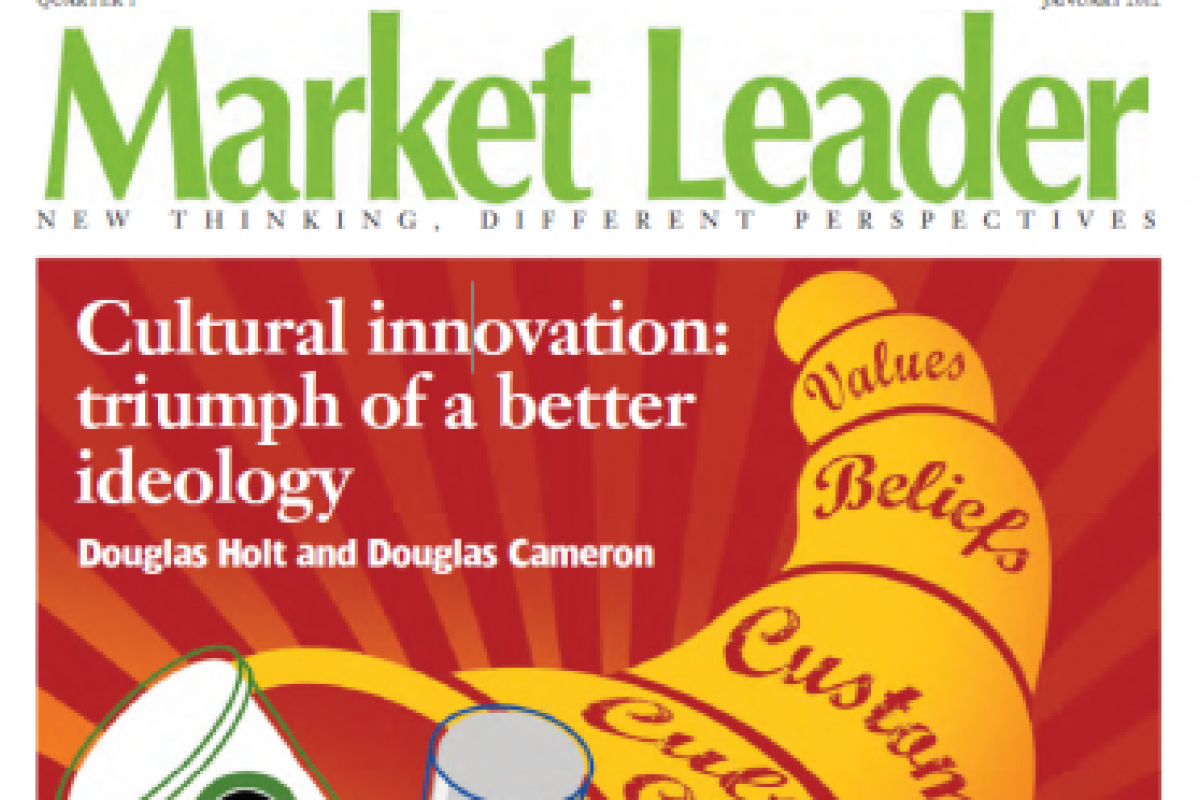Men and women may be social and legal equals, but we are wired differently by our genes. These differences influence how we consume.
After years of unisex positioning aiming to please both men and women at the same time, consumers are starting to choose brands that give them the chance to celebrate their masculinity and femininity.
Recently there has been a revival of old-fashioned female pursuits such as making cupcakes and knitting; while men are indulging in pick-up trucks and gaming. Are we going backwards and turning back the clock on feminism and female empowerment? Will our daughters turn their back on careers to focus on homemaking, and will our sons avoid cooking and cleaning at all costs?
Not as far as we can see. Real progress has been made in the past 20 years; men and women are moving towards social equality, and there has been a merging of men’s and women’s roles.
changing places Women have moved into the workplace, and men have moved into the kitchen, though apparently they always leave the cupboard doors open. As men’s and women’s roles merged, role models emerged to match. David Beckham represented the feminised, metrosexual male in his sarong, while predatory Jordan took ladette culture to new levels.
Yet the desire to go back to traditional roles has a compelling rationale behind it.
We may be social equals but that doesn’t mean we are the same – men are still from Mars, and women from Venus. Role models seem to be changing: Cheryl Cole is a traditionally feminine role model, while Beckham is looking distinctly manlier and Bear Grylls is emerging as a tough male role model.
The verb ‘to man up’ has entered the dictionary and men and women want to celebrate and indulge their separate identities.
So there’s no need to worry – we’re not turning back the clock on feminism. It’s just that after years of advertising either ignoring the issue with unisex positioning or trying to follow the ‘new’ man and ‘new’ woman, it looks as though men and women want to be treated in more traditional ways.
In a world where male and female roles have merged, every now and then men and women want to escape back to a world where roles are more separate and to brands offering an engaging way of doing this.
new strategies Gender provides a compelling source of stories. Brands can use gender in their strategies in various ways. Gender-ise a unisex category: same brand, different story. Safe haven: an enclave in the other gender’s territory.
1 Gender-ise a unisex category. Strategy: Take a category where brands are unisex and create a gender-ised personality. There was a gap in the market for free magazines for commuters in London, which spoke directly to men or to women. Stylist magazine has enjoyed huge success, and was recently voted Britain’s Best New Magazine.
The magazine connects with women by acknowledging the many facets of their feminine identity. It addresses them at several levels: as professionals, as mothers, wives and girlfriends and as simply women. Its content explores the tensions involved in juggling roles and time to achieve a work–life balance, alongside unashamedly girly moments of indulgence (beauty, nails, hair).
For Stylist, the underlying story is of women rediscovering and celebrating their femininity. One of the challenges of this approach is to accept that by focusing on one brand and one gender you are subsequently writing off half of the potential target market. The benefit is that by doing so, you create higher levels of brand engagement and identification than would be the case with a unisex brand.
2 Same brand, different story for men and women. Strategy: Target both genders with the same product/brand, but tell each a different brand story.
Bugaboo baby buggies presents itself to men as a cleverly engineered rugged all-rounder, and to women as a must-have baby accessory. Bugaboo’s brand proposition is based around progress. It gets this across to men and women in different ways.
The male story: The brand tells an engineering story, Dyson-style, complete with pictures of the male founder of the company and his mission ‘to solve a complex problem, choose a new path’.
"In a world where male and female roles have merged, every now and then men and women want to escape to a world where roles are more separate, and to brands offering this"
The female story: The brand tells an aspirational lifestyle story, placing the Bugaboo as an essential ally in modern-day parenting. Grounded, practical, progressive and chic.
The two stories complement one another. They are two different takes on the progress theme, as if talking to men and women in a different language.
3 Safe haven: an enclave in the other gender’s territory. Strategy: In a market dominated by one gender, create a niche within it exclusively for the other, minority gender. Just over half of gin drinkers are women, yet the feel of the category is overwhelmingly masculine.
Greenall’s, the gin manufacturer, saw this as an opportunity, and developed Bloom Premium Gin – the first premium gin specifically aimed at women.
The team behind Bloom wanted to create a brand that would connect with women, be aligned with their aspirations and speak to them on their terms. The brand’s backstory confirms this; created by the world’s first female master distiller, Joanne Moore, it has a strong proposition (‘Steal a Bloom moment’) that helps establish it in a male-dominated category. Bloom is enjoying strong growth in the UK and Spain, and is about to launch in the US.
The social tensions surrounding gender can provide a potent energy, which brands can use as a platform to tell stories to engage consumers. Gender is a simple though often overlooked way of getting consumers to identify closely with your brand.
Mary Say is managing director of Brand Potential.
Charlie Skinner is client services director of Brand Potential.
